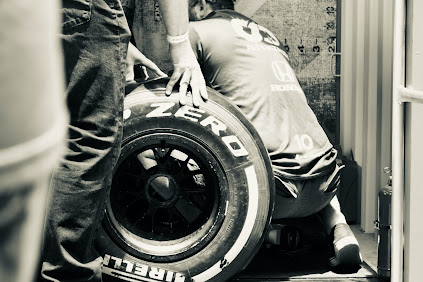F1 2023 regulations change: new rules, same problems?
Abstract
Starting from an
analysis of the new set of rules amended for the 2023 Formula One season, this
article will try to find if these new prescriptions will be able to solve some
of the problems related to the previous season or if they will suffer of the
same weaknesses.
The new rules for 2023
Due to the big regulations change provided for the
2022 season, there were some areas that needed to be addressed in order to
solve some issues related to the last championship. In addition to this,
Liberty Media is always trying to find new ways to improve entertainment. This
background led to a series of regulatory variations for the upcoming Formula 1
season.
Starting from the technical
changes, one of the most important modification is related to car’s height.
This year, the minimum height for the car’s floor needs to be at least 15 mm
above the ground. This measure was necessary to avoid the phenomena called
“porpoising”, which caused a lot of instability issues for most of the
competitors during the first half of last season. Some of the other measures
are related to the weight of the cars, reduced from 798 kg to 796 kg, and an
improved freedom in gearbox components.
Looking to the safety
improvements, the most relevant ones are linked to the dimensions of the side
mirrors (from 150mm to 200mm) and the strengthening of the Roll Hoops, a
precautional provision related to the huge crash occurred to the Alfa Romeo’s
driver Guanyu Zhou in Silverstone last year.
On the entertainment side,
the most important changes are connected to the introduction of a new
qualifying scheme for two races as a test. This format will be based on the use
of a specific tyre compound for every round of qualifying: starting from Q1
with hard tyres; Q2 with medium tyres; and Q3 with soft tyres. This new system
will improve also the usage and the optimization of all types of tyres during
the weekend and is based on the proposal made by Pirelli. In addition to this,
the number of sprint races is increased from 3 to 6, to provide more events and
excitement.
The last changes that need
to be remembered are linked to a small tweak of the F1 Financial regulation and
the consequential Cost cap. This new set of rules will be again in the
spotlight, considering the number of grey areas used by teams to avoid its breach.
Last but not least, there is
a new system for grid penalty, with the aim of avoiding the chaos that in the
last season made difficult, even for teams, to understand from which position
the driver would have started the race.
New
rules, old problems?
Considering
the aim of this modifications to the various regulations of Formula 1, it is
undeniable that FIA, jointly with Liberty Media, are facing some of the
recurrent issues related to the pinnacle of motorsport: Show, Safety and grey
areas hidden by the rules.
Regarding
safety and clarity it is easy to say that every kind of improvement is worth a
try and is welcomed in a really positive way by everyone. Easy and clear
penalties or strong Roll Hoops structure are measures that will effectively
improve the sport and make it also easier to understand.
On
the other hand, the obsession with the “spectacle” or the “show” made by the
Circus is probably more a curse than a blessing. It is clear that some
improvements can make F1 more interesting but, most of the time, they are only
a way to distort F1 to its essence. During the last years, several attempts
were made to find a different format for qualifying and every time it was only
a mistake more than a good decision. In addition to this, sprint races are not
related to the DNA of Formula 1, and the complex format behind them is as useless
as difficult for the team to comply with.
Another
relevant aspect is related to the “sustainability” of the sport. In this period
full of claim of being sustainable, it is very important to act so and not only
to express that. A lot of disappointment came from the Race calendar for 2023
and his poor optimization for logistics and travel consumption all around the
world. It is necessary to start acting coherently to the principles stated and
agreed by FIA, regarding sustainability before it will be too late. Not only in
apocalyptic way, but also for the image of an ISF that needs to be above an unfair
usage of good values and principles.
The
other important aspect is related to Grey areas and the Financial Regulations,
that will be, unfortunately, again in the centre of the upcoming season. Considering
the current mechanism of review, Budget cap breaches for 2022 season will be
known and under review only by half of 2023 season, with the strong risk of
undermining the “on track results” with the “on paper balances” as it happened
with the RedBull’s breach in 2021.
In
conclusion this season, even if it is not a year of big changes, could be not
only a great year of races but also a strong base for 2026 regulations, with
the hope that FIA and Liberty Media start creating a serious path of real
sustainability and a fair ground of competitiveness for all the stakeholder
involved.




Commenti
Posta un commento